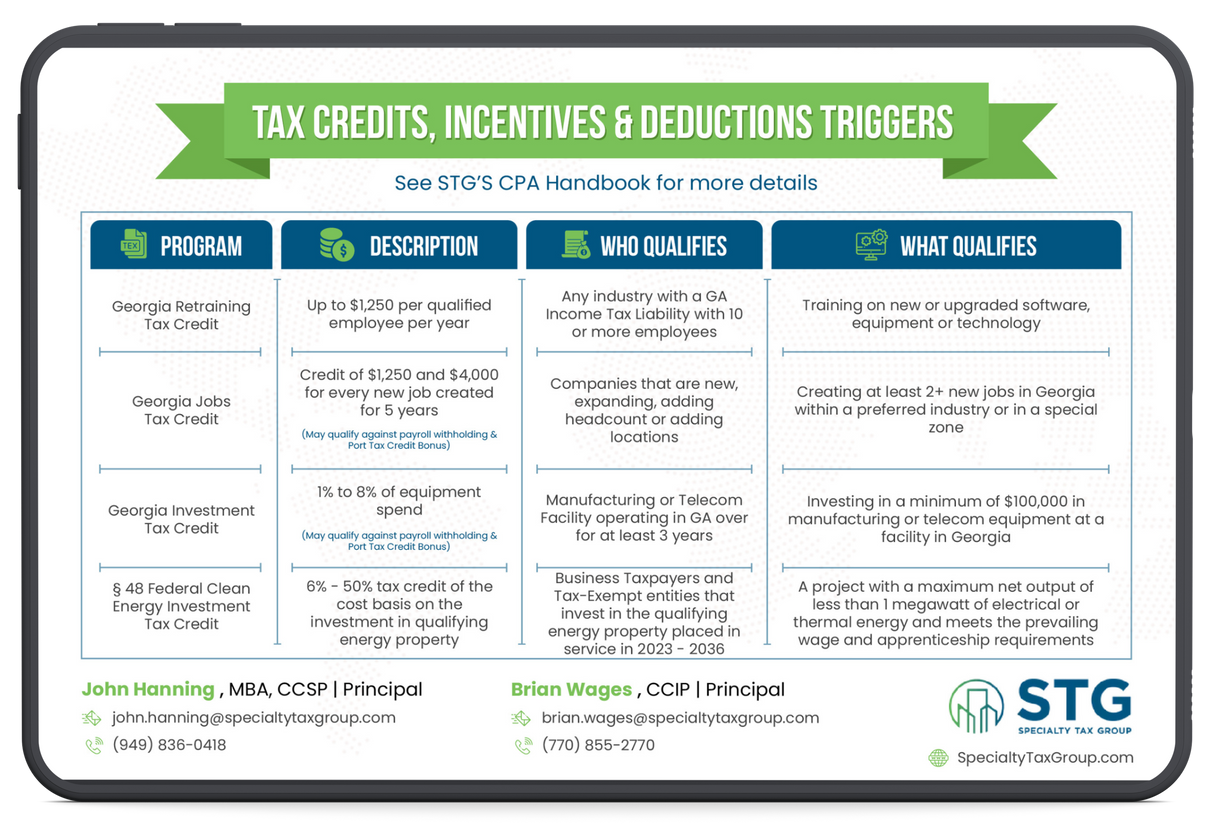This blog post has been researched, edited, and approved by John Hanning and Brian Wages. Join our newsletter below.
Newsletter Form
What is an Empowerment Zone?

Empowerment Zones (EZs) are designated areas of high poverty and unemployment that benefit from tax incentives provided to businesses that are located within the boundaries of the EZ. The Empowerment Zone program was extended through December 31, 2025 through the Consolidated Appropriations Act, 2021 (CCA, 2021) and the Taxpayer Certainty and Disaster Tax Relief Act of 2020, which were signed into law by President Trump at the end of 2020. There are Empowerment Zones in several of Ohio's major cities, including Cincinnati, Columbus and Cleveland, as well as all over the country.
What is the Empowerment Zone Employment Tax Credit?
Businesses operating in EZs qualify for the Empowerment Zone Employment Tax Credit for each of its employees who reside within the EZ and perform substantially all of their services within the zone. Both newly hired employees and current employees can potentially qualify, as long as they meet the residency and work location requirements.
The credit is 20% of the first $15,000 of qualified wages paid to an eligible employee, up to a maximum credit of $3,000 per employee per year. There is no limit on the number of qualified employees for which an employer can claim the credit.
To be eligible, an employee must have their principal residence within the empowerment zone while performing services for the employer. Employers can use the HUD EZ Address Locator tool to verify if a business location or employee's residence falls within a designated empowerment zone.
STG Insight: Because the Empowerment Zone Tax Credit Program was extended through 2025, the opportunity could be an annual benefit for at least five years from 2021-2025. Assuming the business and employee qualify by being located within an EZ, and the employee makes wages of at least $15,000 annually, the maximum credit would be $15,000 per employee ($3,000 for each year).
Claiming the Empowerment Zone Employment Credit
The Empowerment Zone Employment Tax Credit is claimed by filing Form 8844 with the employer's federal income tax return. No pre-certification is required. However, wages used to claim this credit cannot also be used for the Work Opportunity Tax Credit, Employee Retention Credit, or other credits.
This income tax credit can be used to reduce tax liability of both C-corporations and owners of pass-through entities such as S-corporations, partnerships and sole proprietorships. It provides a valuable incentive for businesses to operate in and hire employees residing within designated empowerment zones.
By incorporating the Empowerment Zone Employment Credit into their tax planning strategies, eligible businesses can potentially receive substantial tax savings while supporting economic growth and job opportunities in underserved communities.
Contact Brian Wages at brian.wages@specialtytaxgroup.com to find out if your address or client’s address is within an Empowerment Zone. If located within an EZ, an estimated credit amount can be generated by only providing the employee addresses. Specialty Tax Group (STG) helps CPA firms and taxpayers by providing innovative tax planning strategies to secure tax credits and deductions with audit-ready deliverables. Headquartered in Georgia, STG is a nationwide specialty tax firm focused on engineered tax services, including cost segregation, green energy incentives, and research & development tax credits. Learn more at www.specialtytaxgroup.com.





